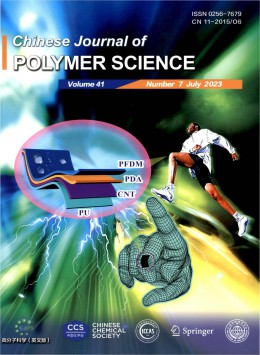如何縮短《Chinese Journal of Polymer Science》雜志的審稿周期?
來源:優發表網整理 2025-09-25 17:48:11 5560人看過
想要縮短《Chinese Journal of Polymer Science》雜志的審稿周期需要作者、編輯部和審稿人等多方面的共同努力,作者可以采取一些有效措施,間接地加快審稿進度,提升稿件的處理效率。
建議如下:
一、提高論文質量
(1)嚴格遵循投稿要求:在投稿前,仔細閱讀《Chinese Journal of Polymer Science》雜志的投稿指南,包括格式要求、字數限制、參考文獻格式等。確保稿件符合雜志的規范,避免因格式問題被退回修改,從而耽誤時間。
(2)提高論文質量:確保論文的研究內容具有創新性和學術價值,數據準確,論證嚴謹,語言表達清晰流暢。高質量的稿件更容易通過初審,進入同行評審階段。
二、選擇合適的投稿時機
(1)關注期刊審稿周期:在投稿前,了解《Chinese Journal of Polymer Science》雜志的審稿周期(預計1-3個月)和發表周期(月刊),以便合理安排投稿時間。
(2)關注期刊動態:了解期刊的專題征稿或熱點話題,針對性地投稿,可能獲得優先處理。
三、與編輯部保持良好溝通
(1)主動了解審稿進度:如果超過預計的審稿時間仍未收到回復,可以禮貌地向編輯部發送郵件,詢問稿件的審稿進度。
(2)尊重審稿意見:認真對待審稿意見,積極修改論文中的不足之處,共同探討論文的改進方向。
需要注意的是,縮短審稿周期的前提是保證稿件的質量,不能為了追求速度而犧牲學術嚴謹性。
《Chinese Journal of Polymer Science》雜志創刊于1983年,是由中國科學技術協會主管、中國化學會;中國科學院化學研究所主辦的學術理論月刊。國內刊號CN:11-2015/O6,國際刊號ISSN:0256-7679。該雜志以推動化學改革與發展、探索化學規律為宗旨,致力于為化學工作者、研究者和管理者提供一個學術交流的平臺。
《Chinese Journal of Polymer Science》雜志投稿建議:
Instructions to Authors
Submission
Papers appearing in the Journal comprise Regular Articles, Notes, Rapid Communications, which should contain original information, theoretical or experimental, on any topics in the field of polymer science and polymer material science. Feature Articles are also welcome. Papers already published or scheduled to be published elsewhere will not be accepted.
Notes and Rapid Communications are limited to less than four pages of the Journal. Notes are concerned with subjects of limited scope, which require no further information in a future publication. Rapid Communications deal with significant findings worthy of urgent publication. Feature Articles are limited to review of the author's own results in a systematic research, which have been published recently, in part or in whole.
For papers submitted for publication as Rapid Communications, a brief introduction outlining the significance of the work and the rationale for urgent publication must be submitted together with the manuscript.
Manuscripts should be submitted via web-based online submission system
Manuscripts
Manuscripts should be written in English, double-spaced and single-sided on A4 sheets with margins of 3 cm all round, and should be numbered beginning with the title page. The first page of an article should contain only (1) the title of the paper, (2) the name(s) and address(es) of the author(s), (3) an abstract of 50-250 words, (4) 3-5 keywords and (5) an abbreviated title not exceeding 45 characters (including spaces) for the running head.
Heading and Subheadings for different sections of the paper should be clearly indicated.
Units of measurement, abbreviations and symbols should follow the International System of Units (SI). Equations and formulae should be typed clearly. Equations should be numbered consecutively with Arabic numerals in parentheses on the right-hand side of the page. Any special symbols should be identified in the margin.
Tables should be typed on separate sheets together with a suitable caption at the top of each table. All the tables should be numbered consecutively in Arabic numerals.
Figures should be submitted on separate sheets and numbered consecutively in Arabic numerals. All figure captions should be summarized on a separate sheet after the text. For best results, figures should be submitted at the actual size at which they should appear in the journal and fit a half column width(Max. 8.0 cm). A full column width (Max. 17 cm) will be considered only when absolutely necessary to the clarity of the figure. For figures, the minimum font size should be 8 pt and the minimum line width should be 0.4 pt. TIFF, EPS or JPG files are the preferred format. Suggested packages for line graphics are Origin (preferred, please use line width 2 and symbol size 12), Adobe Illustrator (version 3.0 or above), Freehand and Corel Draw. Files of scanned line graphics can be accepted preferably at a resolution of 1000dpi (Min. 600dpi). Black and white photos, micrographs etc should not be saved as color.
References should be cited in the text with Arabic numerals within square brackets in order of appearance, and listed at the end of the paper in numerical order. The following style should be followed for the reference list:
Journal:
Reference number, surname, initial(s), journal, year of publication, volume number: page number
1 Mochel, K.D., J. Polym. Sci., A-1, 1972, 10: 1009
2 Wang, H.L., Chen, J.M., Huang, Y. and Shen, J.R., Chinese J. Polym. Sci., 1997, 15(10): 57
3 Einaga, Y. and Fujita, H., Polymer, in press
Books:
Reference number, surname, initial(s), "title", edition, publisher, place of publication, year, page number
4 Zhou, Q.F. and Wang, X.J., "Liquid crystalline polymers" (in Chinese), Science Press, Beijing, 1994,
p.88
5 Schmidt, H., in “Hanbook of environmental chemistry, Vol. 2E”, ed. by Hutzinger, O., Springer, Berlin Heidelberg New York, 2003, p.111
Patents:
Reference number, inventor's surname, initial(s), or patentee (firm), year, patent number
6 Furukawa, J., Kobayashi, E. and Takahire, K., 1974, U.S.Pat., 3,817,968
Theses (PhD)
Reference number, surname, initial(s), “title”, thesis, university, (place of university), year
7 Trent, J.W., “Experimental acute renal failure”, Thesis, University of California, 1975
Graphical Abstract
All manuscripts must be accompanied by a graphical abstract which will be published in the Journal’s Table of Contents. The graphical abstract consists of a brief summary and a graphic highlighting the key findings of the work. Such summaries are limited to 50 words in length and should not be confused with the abstract. The graphic could be a key figure or scheme of the manuscript or a graphic specially prepared for Table of Contents. The graphic could be in the form of a structure, reaction/mechanism scheme, graphical data, photograph etc., but tables or spectra are not recommended. Color graphic is encouraged. The Graphical Abstract should be incorporated on the last page of the manuscript. The authors are asked to supply the materials in the following format:
Graphical Abstract
“Title of the manuscript”
Authors
Brief summary
Graphic
聲明:以上內容來源于互聯網公開資料,如有不準確之處,請聯系我們進行修改。
